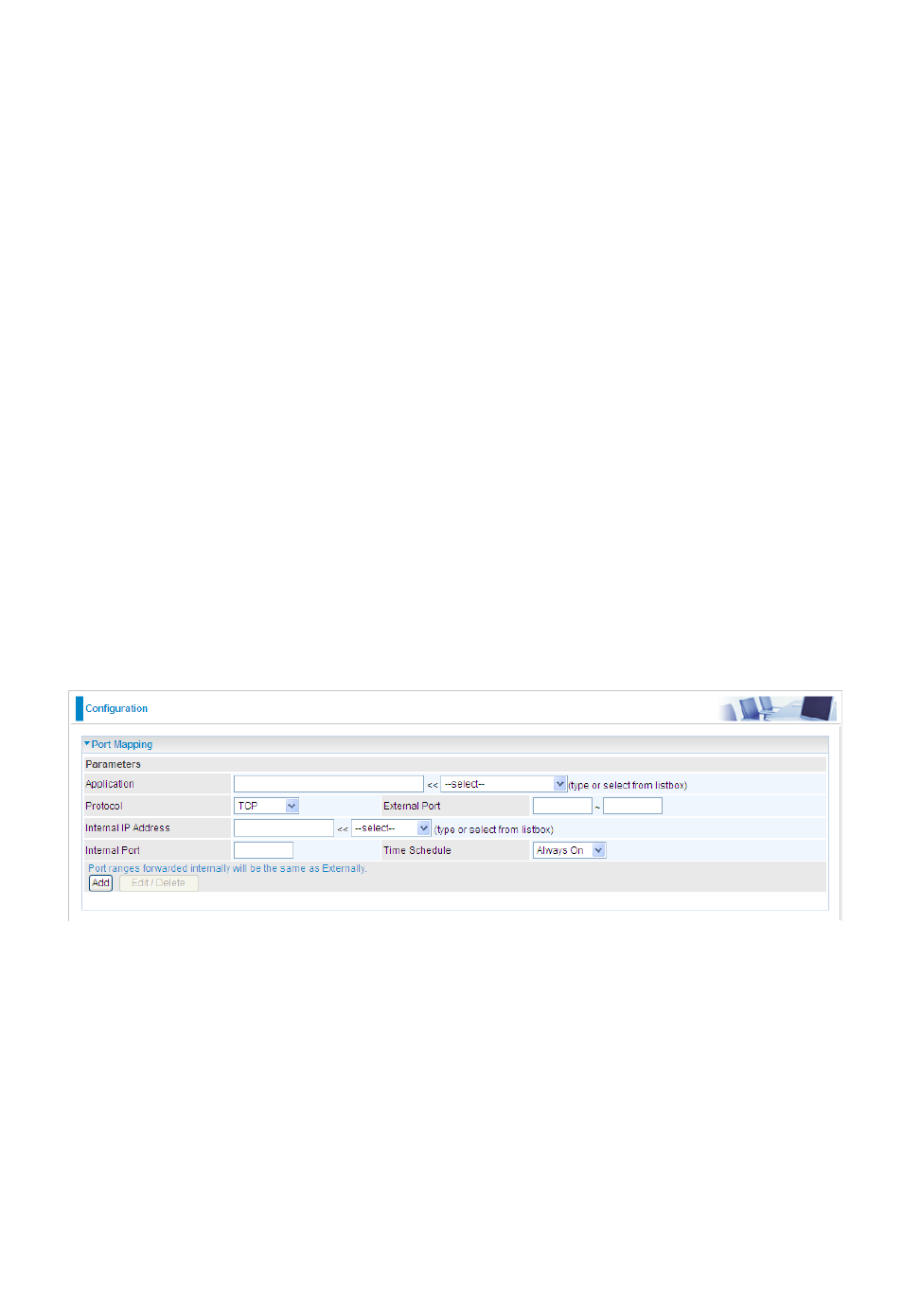Virtual server, Port mapping – Niveo Professional NWAR33P User Manual
Page 128

128
Virtual Server
Virtual Server allows you to direct incoming traffic from WAN side (identified by Protocol and
External port) to the Internal server with private IP address on the LAN side. The Internal port is
required only if the external port needs to be converted to a different port number used by the
server on the LAN side.
In TCP and UDP networks a port is a 16-bit number used to identify which application program
(usually a server) incoming connections should be delivered to. Some ports have numbers that
are pre-assigned to them by the IANA (the Internet Assigned Numbers Authority), and these are
referred to as “well-known ports”. Servers follow the well-known port assignments so clients can
locate them.
If you wish to run a server on your network that can be accessed from the WAN (i.e. from other
machines on the Internet that are outside your local network), or any application that can accept
incoming connections (e.g. Peer-to-peer/P2P software such as instant messaging applications
and P2P file-sharing applications) and are using NAT (Network Address Translation), then you
need to configure your router to forward these incoming connection attempts using specific ports
to the PC on your network running the application. You also need to use port forwarding if you
wish to host an online game server.
Examples of well-known and registered port numbers are shown below, for further information,
please see IANA‟s website at: http://www.iana.org/assignments/port-numbers
Port Mapping
Application: Select the service you wish to configure.
Protocol: A protocol is automatically applied when an Application is selected from the listbox or
you may select a protocol type which you want.
External Port & Internal Port: Enter the public port number & range you wish to configure.
Internal IP Address: Enter the IP address of a specific internal server to which requests from
the specified port is forwarded.
Add: Click to add a new virtual server rule. Click again and the next figure appears.